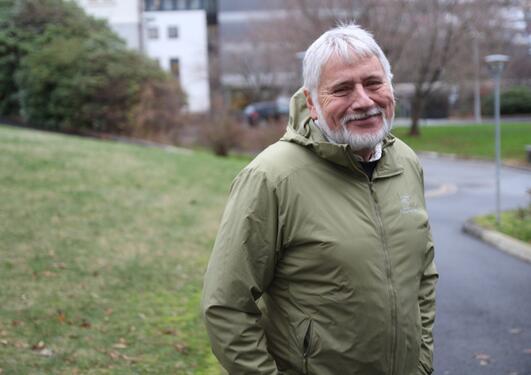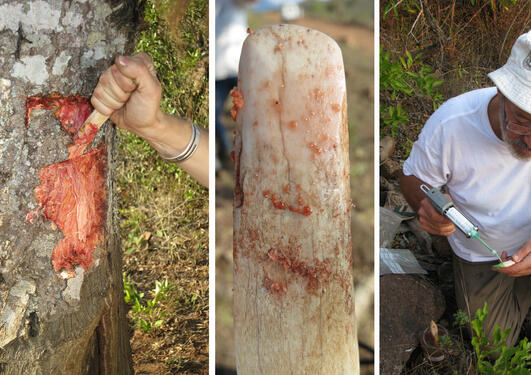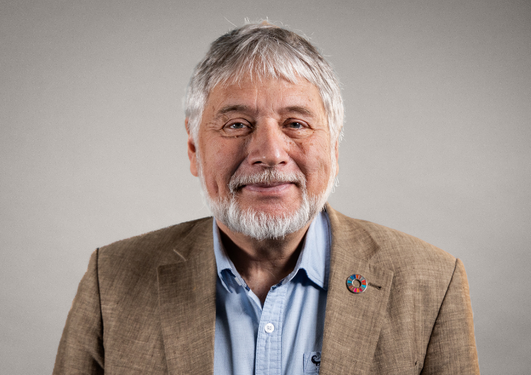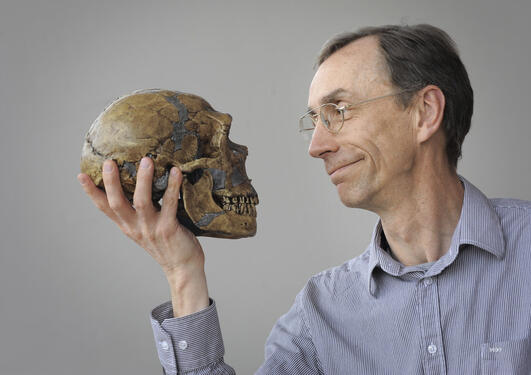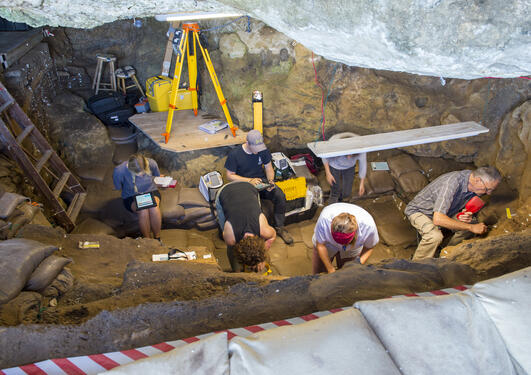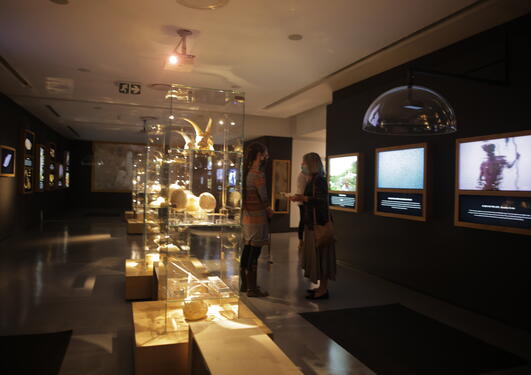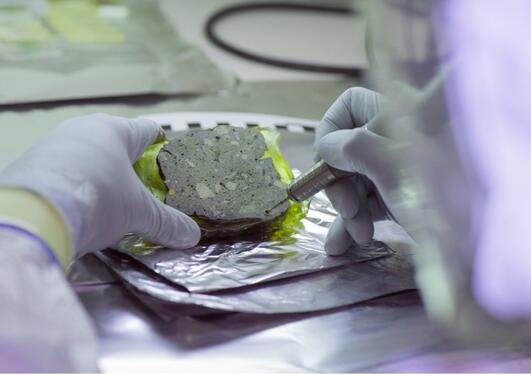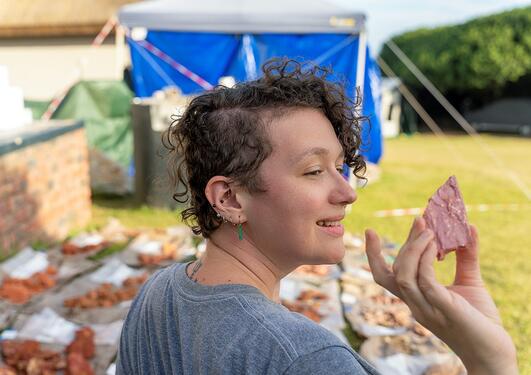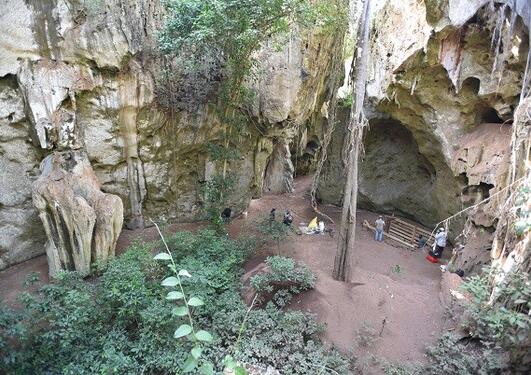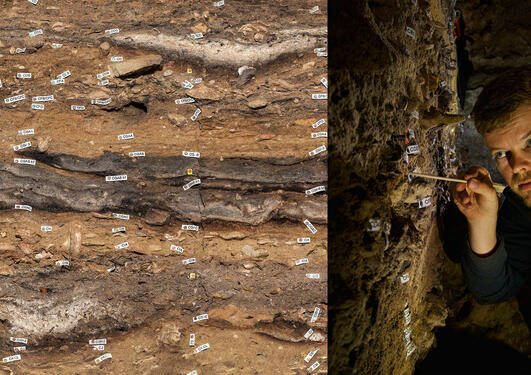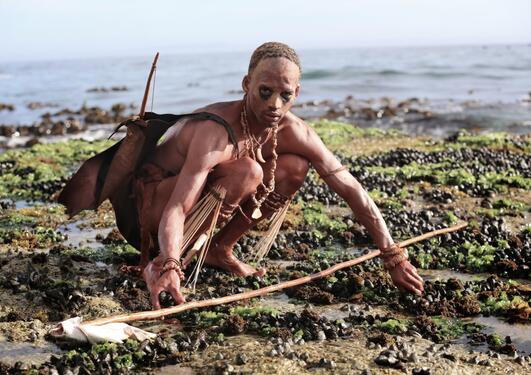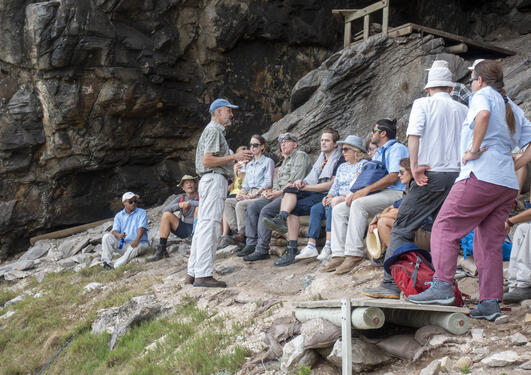News archive for SAPIENCE
Eystein Jansen has played a vital role in the Centre since its foundation. Jansen's work has focused on exploring the ways that climate reconstruction can benefit archaeology to increase our understanding of how and when Homo sapiens evolved into who we are today.
An international team of archaeologists, led by a UiB scientist, has identified the oldest bone tools from southern Africa. The tools are 60,000 to 80,000 years old and were likely used for debarking trees and to dig into the ground.
Climate scientist Eystein Jansen has been elected Vice President of the European Research Council (ERC). He is the first Norwegian researcher to join the leadership of the elite division for European research.
Svante Pääbo has been awarded the 2022 Nobel Prize in Physiology or Medicine. "Warm congratulations to Svante Pääbo. We are extremely proud of our collaboration with the new laureate", says SapienCE-director Professor Christopher Henshilwood at the University of Bergen.
SapienCE invites applications for two positions as PhD Research Fellowships in Archaeology. The deadline for two fully funded 3-year PhD positions at SapienCE has been extended until September 11th 2022!
The SapienCE paper about a trapped artefact became the top ten most downloaded articles in the journal Geoarchaeology this year. The study demonstrates how the creative use of unconventional research methods turned an unfortunate archaeological sampling event into a scientific success story.
The SapienCE annual report for 2021 is now available with an insight to our exciting projects and activities which have taken place throughout the calendar year.
Cutting-edge technology makes it possible for scientists to retrieve DNA recovered decades ago. An international team of researchers, including scientists from SapienCE, were able to isolate ancient DNA from blocks of sediment embedded in plastic resin commonly used for micromorphological analyses.
One of the earliest forms of symbolic behaviour is the use of ochre. A new SapienCE project will explore how iron-rich rocks shaped the lives of early modern humans along the coast of South Africa.
The earliest human burial in Africa has been discovered at an archaeological site near Mombasa. Excavations revealed the body of a three-year-old child, deliberately buried around 78,000 years old.
The 2020 SapienCE Annual report is now published. The report presents stories, field reports and articles based on a selection of scientific publications issued throughout the year.
New type of analysis show for the first time how people who lived between 100,000 and 70,000 years ago organised their campsites and settlements. The results can explain why these people developed the ability to make jewellery and objects of art.
Humans are the only species that uses symbols to express quantities, and researchers now want to find out why number systems vary so much between cultures.
“We are very proud that SapienCE’s Origins of Early Sapiens Behaviour exhibition has been updated to a new format and found a new home at the Origins Centre at the University of the Witwatersrand in Johannesburg,” Christopher Henshilwood, director of SapienCE says.
The hominin line shares most of its genetic makeup and a great deal of its behavioral repertoire with its closest primate relatives. At some point in the past, however, it set off on a different evolutionary trajectory, culminating in cognitive skills that are impressive both in extent and in the speed at which they have evolved. One goal of SapienCE is to shed light on when this process began... Read more
Daily excavations, surveys, sampling and archaeological experiments. The SapienCE team were right in the middle of their yearly field expedition in South Africa, when the pandemic became a reality forcing the world into lockdown.
The report provides an insight to our exciting activities taking place throughout the calendar year.
The Norwegian Academy of Science and Letters has elected Professor Christopher Henshilwood as new member.
Pages
- October 2025 (1)
- June 2025 (2)
- May 2025 (1)
- January 2025 (1)
- December 2024 (2)
- September 2024 (1)
- May 2024 (1)
- February 2024 (1)
- January 2024 (1)
- October 2023 (1)
- September 2023 (2)
- August 2023 (1)
- June 2023 (2)
- May 2023 (1)
- March 2023 (1)
- November 2022 (1)
- October 2022 (2)
- September 2022 (1)
- August 2022 (1)
- May 2022 (1)
- February 2022 (1)
- June 2021 (1)
- May 2021 (1)
- April 2021 (1)
- February 2021 (1)
- November 2020 (1)
- October 2020 (1)
- September 2020 (1)
- August 2020 (1)
- April 2020 (1)
- March 2020 (1)
- February 2020 (1)
- January 2020 (1)
- December 2019 (1)
- November 2019 (1)
- December 2018 (1)
- November 2018 (2)
- September 2018 (1)
- March 2018 (1)
- October 2017 (1)
- June 2017 (1)
